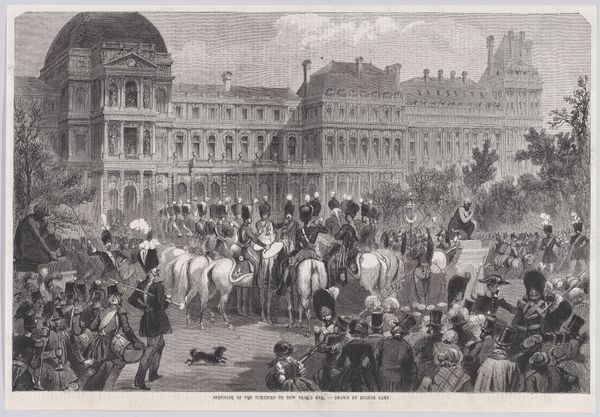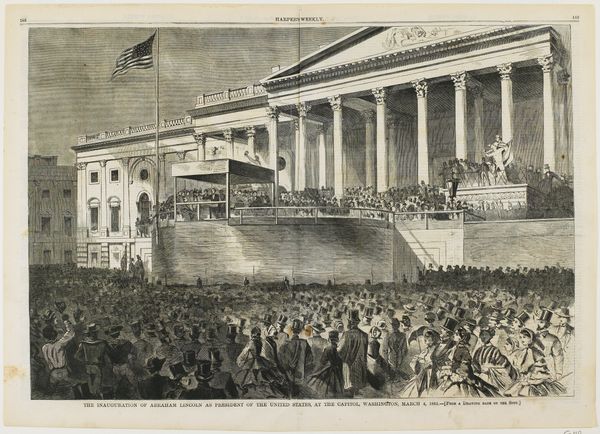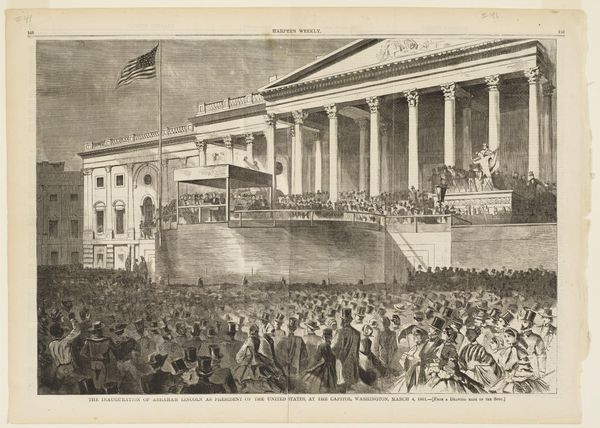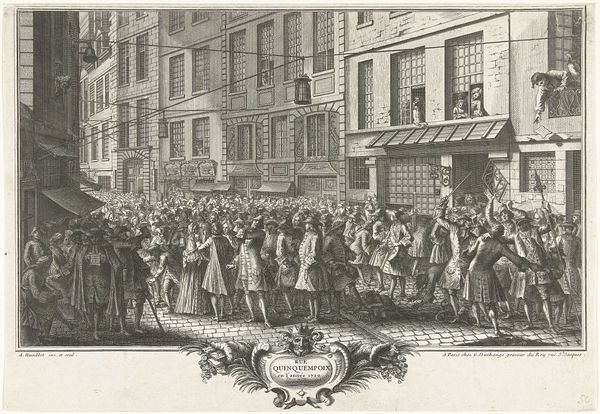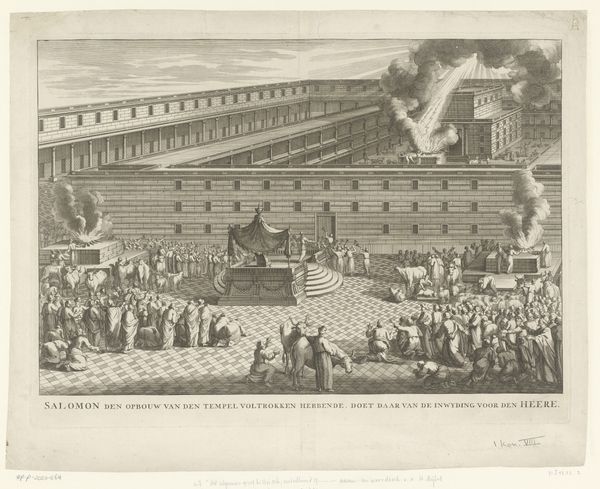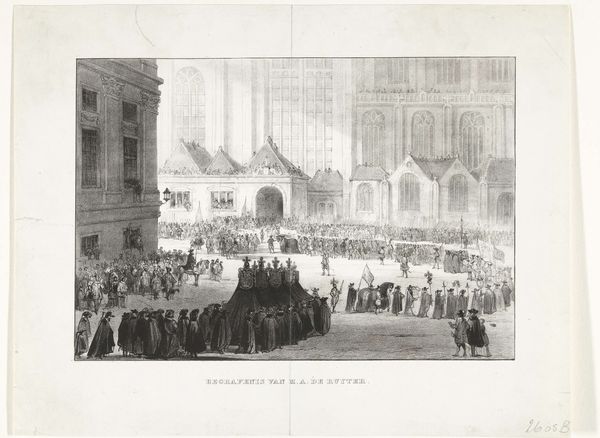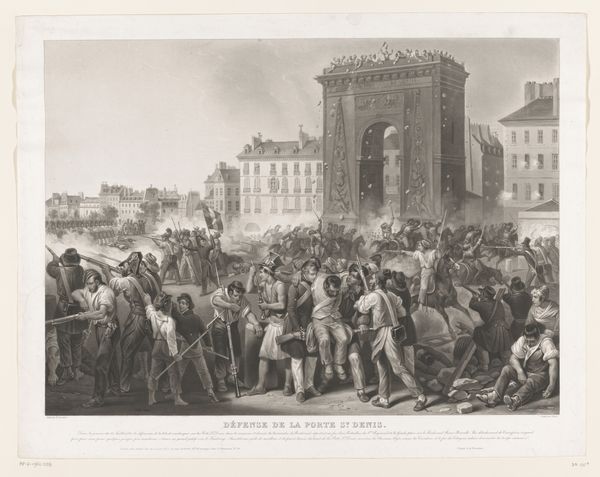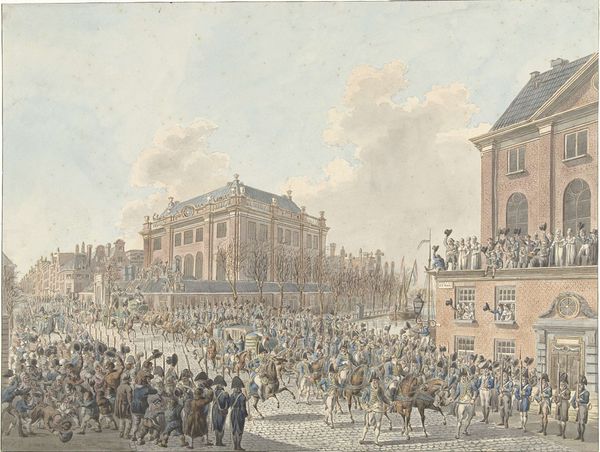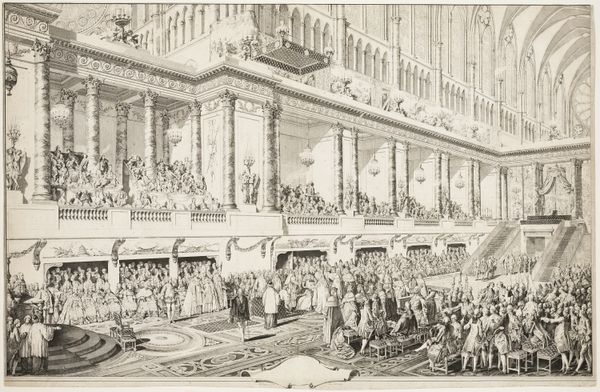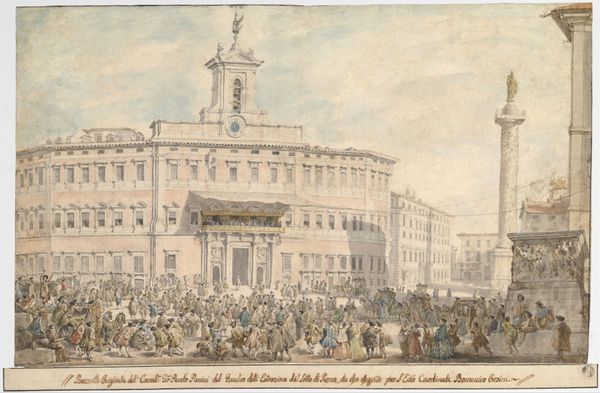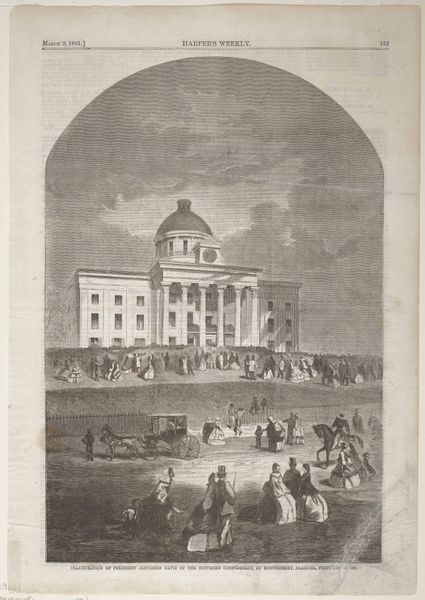
drawing, lithograph, print, paper
drawing
narrative-art
lithograph
paper
cityscape
genre-painting
history-painting
realism
Dimensions: 209 × 320 mm (image); 280 × 404 mm (sheet)
Copyright: Public Domain
Editor: Here we have "Great Riot at the Astor Place," a lithograph by Nathaniel Currier. It’s printed on paper, and the scene it depicts is incredibly chaotic! It’s packed with figures. What can you tell me about this piece? Curator: The print’s materiality speaks volumes about its intended audience. Lithography allowed for mass production, making images of current events accessible to a wide public. This wasn't high art for the elite, but visual journalism for the burgeoning middle class. What do you notice about how the labor involved is portrayed or perhaps obscured? Editor: Well, it seems focused on depicting the event itself and the emotions of the crowd. I don’t really see anything that suggests how it was made, or the process involved. Curator: Precisely. The focus is on the spectacle, not the means of its reproduction. But consider: this print would have been produced quickly, disseminated widely. Think about the labor involved, the accessibility, and how this contrasts with, say, a unique oil painting displayed in a wealthy patron’s home. Doesn't the fact that the artwork can exist as multiple copies affect the reading of its content? Editor: That's a really interesting point. Because it's mass-produced, it's meant to reach more people. So, this print probably influenced public opinion in a way a single painting couldn't. Is it intended to evoke an emotional response more than a deeper understanding? Curator: It likely served both purposes. Consider the artist's choices and the context. Labor, materials, production – these aren't separate from the message. This riot, immortalized in a widely available print, speaks to social unrest and class divisions in mid-19th century New York. It’s all about how these materials can convey a story, but can the physical process of creation affect its cultural value? Editor: I see now that the print's accessibility gives the subject matter additional weight. Thanks. I am going to pay closer attention to this for my next project. Curator: Indeed! Thinking about the materials and mode of production helps to enrich our understanding.
Comments
No comments
Be the first to comment and join the conversation on the ultimate creative platform.
